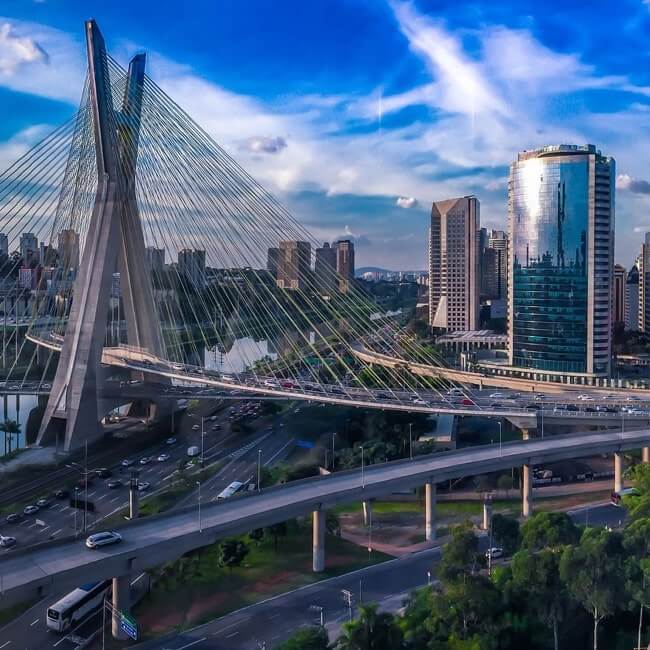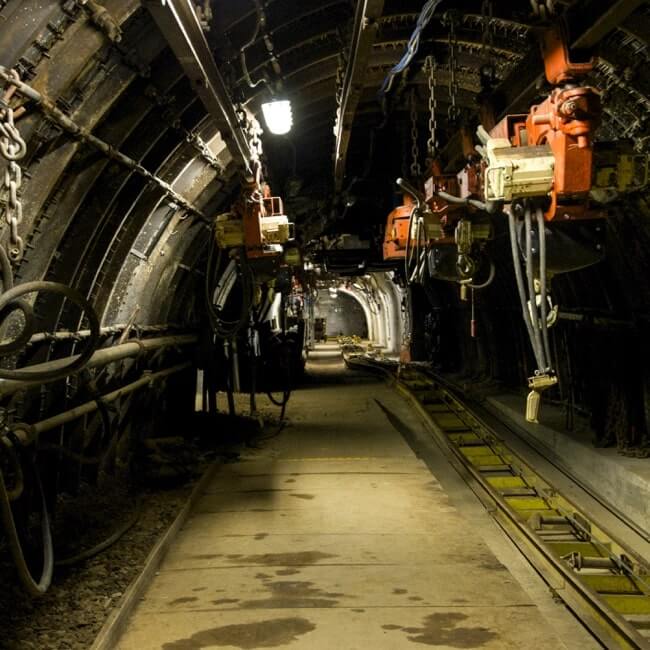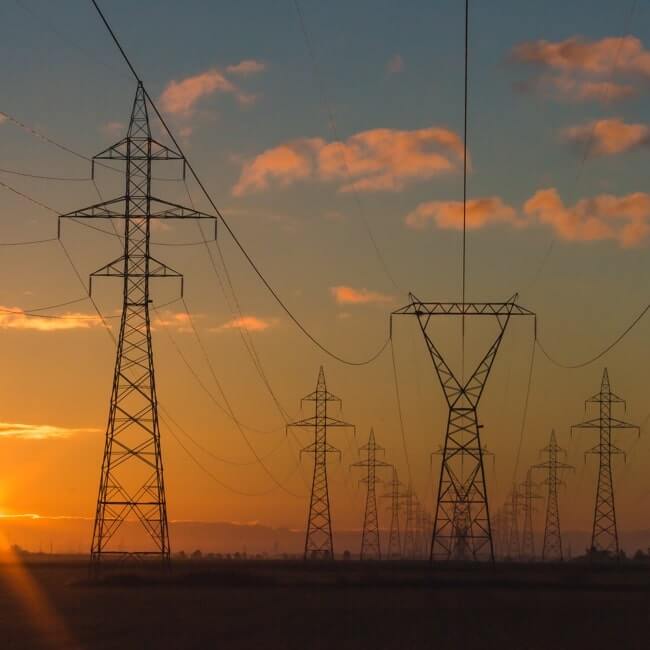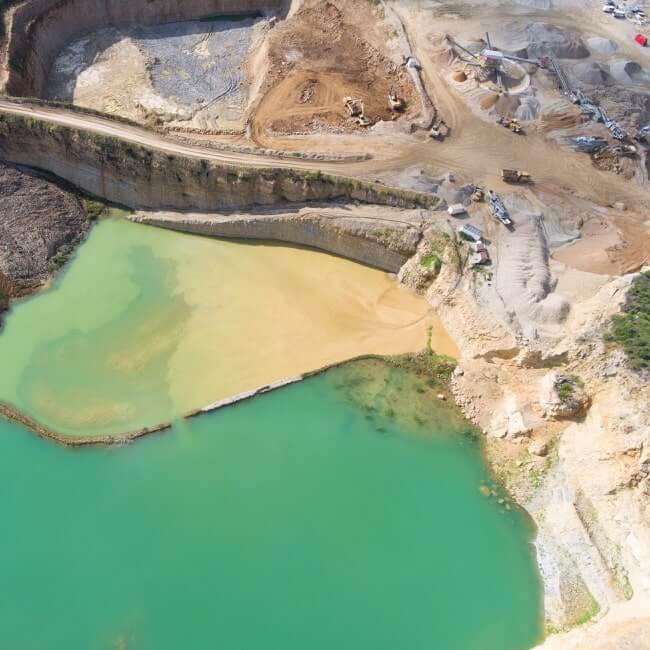Why Alstom has Brazil, Mexico and Chile in its sights
French transport giant Alstom is expanding its Taubaté rolling stock plant in São Paulo state to serve the local and international market, with strong focus on Brazil, Mexico and Chile.
Michel Boccaccio, Alstom’s VP for Latin America and head of the Brazilian operation, talks to BNamericas about the regional plans and sector perspectives.
BNamericas: Why did Alstom expand its Taubaté factory in São Paulo state?
Boccaccio: [Because] in recent years we won six contracts to supply trains for different projects and this factory will be our production base.
These contracts refer to projects for the city of São Paulo, here in Brazil; in Santiago, Chile; Taipei, Taiwan; and Bucharest, Romania.
In São Paulo, specifically, we will supply trains for metro line No. 6, which is an Acciona project, and for CPTM lines No. 8 and No. 9, which are CCR projects. In Chile, the sales contract is related to line No. 7 of Santiago’s metro.
The Taubaté unit was inaugurated in 2015 to manufacture the VLT [light trains] to be supplied in Rio de Janeiro and at the time we made projections which pointed to a large volume of VLTs. However, these projections did not materialize, and we even suspended activities [at the factory] for a period.
Now, with these recent orders, we have projected the delivery of 939 wagons in the next five years. Since our inauguration, we have produced 4,500 wagons, so currently we are talking about around 20% to be produced of the volume we have produced here since the start of operations.
In view of this, we are going to hire 650 people for the factory and will rehire people who had been laid off in the past.
BNamericas: What needs to be done in the mobility sector so that orders continue and past mistakes are avoided?
Boccaccio: What happened in Brazil in recent years was the lack of public resources to carry out works in the sector and the scenario was changing.
The two [recent] contracts we signed here in Brazil refer to concession contracts, PPPs, and private sector companies, such as Acciona and CCR, are raising funds. Thanks to this, projects were possible.
In the past, the problem was the lack of public resources, but now for investments in the sector to gain traction, I hope this model of concessions continues.
BNamericas: Why has the VLT model not been used so much in Brazil?
Boccaccio: First, VLTs already exist in Rio de Janeiro and are a success in terms of serving the public and reformulating the city center.
But what happens with the VLT in Brazil is a specific aspect and similar to the scenario in Latin America, as local governments have preferred electric buses over VLTs, which are more accepted in Europe, the US and Asia.
A VLT project takes at least three years and local governments do not like to wait that long for the start of operations. But VLT is a good solution. In the long term, VLT costs are cheaper than electric buses.
BNamericas: Which Latin American countries present the greatest business opportunities for Alstom?
Boccaccio: Three countries in the region are relevant to our operations now and for the next few years: Brazil, Mexico and Chile.
In Chile, on average, a metro line is built every six years. Their next project, lines No. 7 and No. 8, should not be finished within four or five years.
In Mexico, we won a big contract to supply the Maya train project. Over there, projects are very much related to political cycles. The expectation is that after the next elections in Mexico, we will see a new wave of investment, but the main projects have already been bid, so new projects will take a while to happen.
In Brazil, the Intercidades train is very interesting and should go ahead in the first half of 2023 and it is a very important project to help São Paulo’s mobility sector.
Taking into account this scenario, I can say that in the region in 2023, Brazil will be the most important market.
BNamericas: Are you interested in the Belo Horizonte metro concession?
Boccaccio: We are not going to participate as investors, but we are talking to interested parties to be suppliers. I think this Belo Horizonte metro concession model has to be improved; I don't know if the auction will go ahead [still this month], but if it does, it will also be positive, as it will result in more demand for wagons and trains.
BNamericas: What signals do you get from the incoming federal and state governments regarding the concessions agenda?
Boccaccio: The lack of public resources is an obvious scenario and I see no prospect of improvement, so the concessions and PPP models will continue.
BNamericas: Has the urban mobility sector in Brazil and in the region recovered to pre-pandemic passenger levels?
Boccaccio: We do a global follow-up on this within Alstom and I can tell you that we haven't reached a pre-pandemic level yet.
In addition to the drop in passenger demand, there is another problem in the region. Governments in Latin America did not help companies in the sector as governments in Europe and the US did, so the financial structure of many companies is weakened.
BNamericas: What role will development bank BNDES play in the urban mobility sector?
Boccaccio: I advocate for BNDES to play a continuous advisory role in the structuring of PPPs and concessions, as it has been doing, but also for it to return to being a project financier, promoting long-term resources for the sector.
BNamericas: And what is the trend regarding renewable energies?
Boccaccio: Alstom is present in the rail urban mobility sector and our main focus is on so-called green mobility, which are hydrogen-powered trains. This movement is already strong in Europe and is starting to gain strength in the US.
We think that at some point, this will also gain strength in Latin America, but it will still take some time. This process here in the region should start first with the conversion of diesel-powered locomotives, which pollute a lot, and then expand to the passenger train segment.
Subscribe to the leading business intelligence platform in Latin America with different tools for Providers, Contractors, Operators, Government, Legal, Financial and Insurance industries.
News in: Infrastructure (Brazil)

Brazil expands highway concession portfolio with US$1.3bn Rota dos Sertões project
The federal government plans to offer 15 new highway concession contracts in 2025 alone.

São Paulo state to raise US$1.8bn to finance passenger rail projects
The financing can be obtained from national or international private institutions and banks, as well as development agencies.
Subscribe to Latin America’s most trusted business intelligence platform.
Other projects in: Infrastructure (Brazil)
Get critical information about thousands of Infrastructure projects in Latin America: what stages they're in, capex, related companies, contacts and more.
- Project: Renovación y Modernización del Estadio de Canindé
- Current stage:

- Updated:
1 week ago
- Project: Lot 8B of Highway BR-381 (MG)
- Current stage:

- Updated:
1 week ago
- Project: São Paulo metro line 9 - Emerald extension
- Current stage:

- Updated:
1 week ago
- Project: J. Malucelli airport
- Current stage:

- Updated:
1 week ago
- Project: Line 17 São Paulo monorail
- Current stage:

- Updated:
1 week ago
- Project: Brasilia light rail - first phase
- Current stage:

- Updated:
1 week ago
- Project: Maintenance, improvement and expansion of BR-116, BR-324 and BA 526/528
- Current stage:

- Updated:
1 week ago
- Project: East Dock Project (Moegão, Cais Leste)
- Current stage:

- Updated:
1 week ago
- Project: Teresina - Luís Correia port railway (EF-404)
- Current stage:

- Updated:
2 weeks ago
- Project: New SSB 01 terminal at the Port of San Sebastian
- Current stage:

- Updated:
2 weeks ago
Other companies in: Infrastructure (Brazil)
Get critical information about thousands of Infrastructure companies in Latin America: their projects, contacts, shareholders, related news and more.
- Company: Secretaria de Estado de Mobilidade do Distrito Federal (SEMOB)
-
Brazil's Federal District Urban Transport Secretariat, Semob, is Brasilia's government agency tasked with planning, coordinating, executing, and evaluating urban mobility polici...
- Company: Marcopolo Rail
-
The description contained in this profile is taken directly from an official source and has not been edited or modified by BNamericas researchers, but may have been machine tran...
- Company: Odebrecht Participações e Investimentos S.A. (Odebrecht Participações e Investimentos)
-
Created in 2005 and headquartered in Rio de Janeiro, Odebrecht Participações e Investimentos S.A. (OPISA) is a holding company, part of Brazil's Odebrecht group, that invests do...
- Company: Companhia Docas do Rio de Janeiro (Docas do Rio)
-
Companhia Docas do Rio de Janeiro (CDRJ) is the port authority for of Rio de Janeiro state, managing port infrastructure, promoting competition and boosting urban, economic, soc...
- Company: CNO S.A. (CNO)
-
CNO S.A., formerly known as Construtora Norberto Odebrecht, provides engineering and construction services for the transport and logistics, energy, sanitation, urban development...
- Company: Consul Engenharia Ltda. (Consul Engenharia)
-
The description contained in this profile was taken directly from an official source and has not been edited or modified by BNamericas researchers, but may have been machine tra...
- Company: Metro Engenharia e Consultoria Ltda. (Metro Engenharia)
-
The description contained in this profile was taken directly from an official source and has not been edited or modified by BNamericas researchers, but may have been machine tra...
- Company: Sotreq S.A. (Grupo Sotreq)
-
The description contained in this profile was taken directly from an official source and has not been edited or modified by BNamericas researchers, but may have been automatical...
- Company: Empresa Brasileira de Reparos Navais S.A. (RENAVE)
-
The description contained in this profile was taken directly from an official source and has not been edited or modified by BNamericas researchers, but may have been automatical...
- Company: Suzano S.A. (Suzano Papel e Celulose)
-
The description contained in this profile was taken directly from an official source and has not been edited or modified by BNamericas researchers, but may have been automatical...




